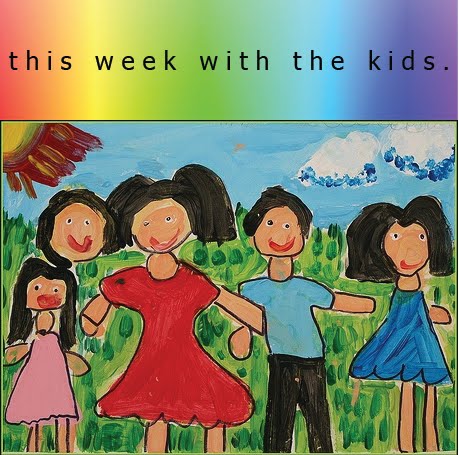This is the second post in the series "A Case for Reading...."
"As a girl I hardly ever read. I got through English at high school with my gorgeous sister, Jules, reading my novels and plays, then in her flamboyant manner talking me through each equipping me with quotes and all that was needed to get through the system and into arts school.
When I became a mum and began teaching my children I read, often for the first time, poetry, plays, classics and fiction, history, biographies, books on science, sport, travel and the arts, and I found I really enjoyed it.
FIVE REASONS FOR READING BOOKS IN THE ARTS ~
1. The first is because art is everywhere. It's seen in a sunrise, the arrangement of food on a plate, design or layout of a room, the cut and make of a jacket, a magnificent garden, a tattoo design on flesh, a fruit and vegetable display, a fancy hairstyle or an exotically made-up face... Art is not confined to the art gallery.
To live life oblivious to art seems as crazy as eating food without tasting it.
In my late teens I first read "Hidden Art" by Edith Schaeffer, which speaks of this view point, that art is everywhere and can be found in everyday areas of life.
2. The second reason is because art shows us how other people live. When I was at school one of my art teachers, who was a dragon, regularly referred to Kenneth Clark's book, "Civilisation ". She would hold the volume in her hands as she walked, reading and then talking to us in an animated fashion as though she had suddenly come alive. Decades later I bought the "Civilisation" series when they came out on DVD and now understand what a treasure my education was under Miss White. Lord Clark's book "Civilisation", traces the rise and fall of European civilisations through looking at the art each created. Art through history gave the true story of people's lives.
3. The third reason we should read books in the arts is because art shows us other people's perspective and experiences of life.
Through art, an artist shares with the world how they feel, what they see and think.
In the well known painting "The Cry" or "The Scream", Edvard Munch clearly shares with us the tension, anguish and extreme loneliness and isolation he felt. The colours, lines, composition and subject are simply tools to express a sound. We see the sound which directs us explicitly to the emotions he sort to communicate.
You may say, this is all fine, but I know what art I like and frankly I don't need to look at let alone read about art I dislike. Justin Paton in his humorous/serious book "How to Look at a Painting", suggests we look at as many paintings as we can and collect up an "image bank" of "remembered paintings". I agree and think the more art we see and read about by artists with different perspectives and life experiences to our own, the wider our compassion and understanding of people and life becomes. Paton says, "At any one time, the amount of average or downright wretched art exceeds the other kind by an alarming ratio. If an artwork's giving you nothing, there's no shame in turning your back. Remember, though, that if you don't occasionally wade through art's lows, you're hardly qualified to register the highs."
4. The fourth reason is because art is inspirational. Edith Schaeffer in "Hidden Art" says, "One area of art inspires another area of art, but also one person's experience of art stimulates another person and brings about growth in understanding, sensitivity and appreciation. One active artist gives courage and incentive, and germinates ideas in others for producing more art. Hence a poor, humble or unknown artist might easily provide the spark which kindles the fire of a great artist."
I find this stimulation all the time. My mind is set off with ideas to write about, craft projects to start or I get a general feeling of being 'fed'. Then I feel as Edith says, "satisfied and fulfilled".
Two artistically inspirational books which had this effect for me, were, Victoria Finlay's "COLOUR, Travels Through the Paintbox" and "BURIED TREASURE, Travels Through the Jewel Box".
5. The last reason I think it is important people read books in the arts is because "Great art changes you". This quote said by art commentator, Sister Wendy Beckett, who is well worth reading or watching on DVD. Here's a link if you wish to read about her.
Sister Wendy's full quote is "The experiential test of whether art is great or good, or minor or abysmal is the effect it has on your own senses of the world and of yourself. Great art changes you."
If we adopt Sister Wendy's method of spending a prolonged time looking at a painting, she says we gradually see things we didn't find at first. This time slowed thinking and pondering can often bring change to how we view the world or see ourselves."
THISWEEKWITHTHEKIDS~ inquire at your library if they have or can get in for you, Sister Wendy's DVD series or Kenneth Clark's (more suitable for teenagers and adults), or borrow one of Victoria Finley's books to be taken on an exotic, fantastic journey to places, people and cultures that will inspire.
Cathy




No comments:
Post a Comment